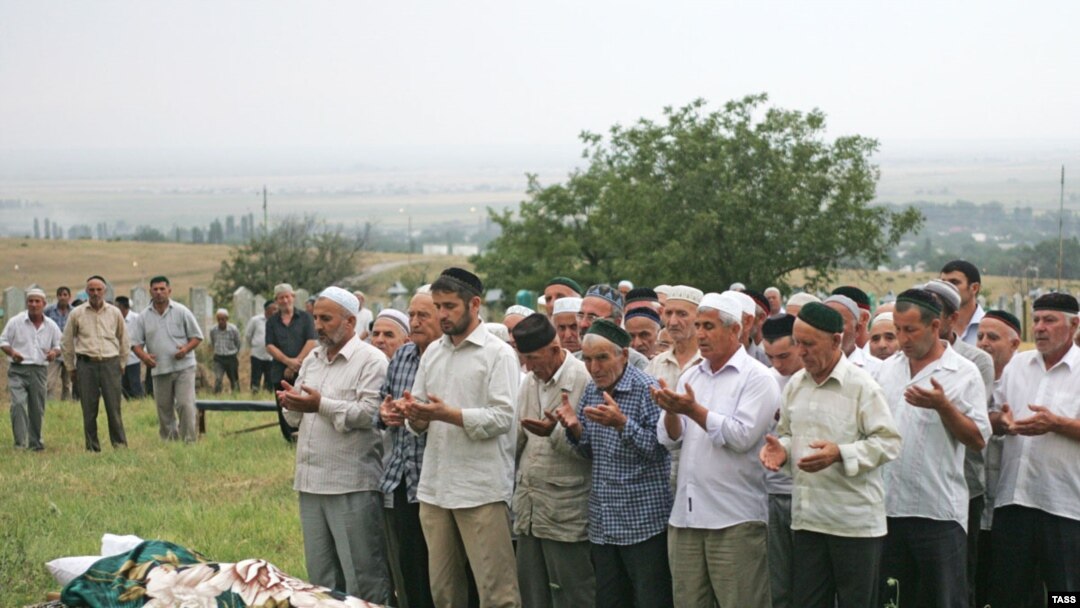It was two years ago that rights worker Natalya Estemirova was kidnapped from outside her home in the Chechen capital, Grozny, and slain with shots to the head and chest.
Now, on the anniversary of her killing -- on July 15, 2009 -- journalists and rights activists inside and outside of Russia say little progress has been made in resolving her murder and are calling for a thorough and impartial investigation into her death.
The Russian rights group Memorial -- Estemirova's employer at the time of her death -- has collaborated with the independent "Novaya gazeta" newspaper and the Paris-based International Federation for Human Rights to conduct its own investigation into the killing of the 50-year-old activist.
Their findings -- presented to Russian President Dmitry Medvedev last week and leaked to the media on July 14 -- suggest that the government investigation is on the wrong track and that the secret services were used to concoct a false version of events to steer attention away from the true killers.
Friederike Behr works in the Moscow office with Amnesty International, one of the rights groups behind a separate press release calling for renewed efforts to fully investigate the murder.
She said the new report didn't put blame on specific authorities but pointed to critical gaps in the investigation -- including DNA evidence found on Estemirova's fingernails and clothes -- that make it impossible to adequately judge who was behind the killing.
"It's not convincingly proven that the current theory published by the investigation committee -- that she was murdered by members of an armed group -- is founded in sufficient evidence," Behr said, "and that with all the other leads suggesting that she was murdered maybe by staff members of law enforcement agencies, that there's really not enough evidence to prove that this version can be excluded."
Medvedev used the first anniversary of Estemirova's killing to announce that authorities had uncovered the killer and were looking for the masterminds behind the attack. Government investigators claim the activist was murdered by Chechen insurgents in retaliation for exposing some of their crimes.
But the new independent report disputes that theory, saying the circumstances of Estemirova's death point to the possible involvement of public officials.
Chechen authorities, including President Ramzan Kadyrov, had publicly criticized Estemirova for her reporting on human rights abuses in the North Caucasus republic, including extrajudicial executions, enforced disappearances, and torture by the Chechen government. Just weeks before her death, Estemirova had exposed a case of extrajudicial killing by local police. Federal investigators, however, have failed to explore any possible role of the police in her killing.
Estemirova had frequently been threatened and harassed for her human rights work. Rachel Denber, who works in the New York office of Human Rights Watch, said the authorities' selective investigation into the murder "raises more questions than it resolves."
"There were very strong circumstances around Estemirova's murder that suggested that there could have been some official involvement," Denber said. "You know, the threats that had been made against Estemirova and others like her, the threats against Memorial, the timing of the threat, the kinds of crimes that Estemirova had been investigating -- all of that pointed to a very strong official interest in seeing some kind of harm done to her."
Rights groups say the Russian government is obligated under both domestic and international law to investigate Estemirova's case properly and prosecute all responsible, regardless of rank or position. Without such a commitment, Denber said, activists like Estemirova continue their work in the North Caucasus "at serious peril."
written by Daisy Sindelar
Now, on the anniversary of her killing -- on July 15, 2009 -- journalists and rights activists inside and outside of Russia say little progress has been made in resolving her murder and are calling for a thorough and impartial investigation into her death.
The Russian rights group Memorial -- Estemirova's employer at the time of her death -- has collaborated with the independent "Novaya gazeta" newspaper and the Paris-based International Federation for Human Rights to conduct its own investigation into the killing of the 50-year-old activist.
Their findings -- presented to Russian President Dmitry Medvedev last week and leaked to the media on July 14 -- suggest that the government investigation is on the wrong track and that the secret services were used to concoct a false version of events to steer attention away from the true killers.
Friederike Behr works in the Moscow office with Amnesty International, one of the rights groups behind a separate press release calling for renewed efforts to fully investigate the murder.
She said the new report didn't put blame on specific authorities but pointed to critical gaps in the investigation -- including DNA evidence found on Estemirova's fingernails and clothes -- that make it impossible to adequately judge who was behind the killing.
"It's not convincingly proven that the current theory published by the investigation committee -- that she was murdered by members of an armed group -- is founded in sufficient evidence," Behr said, "and that with all the other leads suggesting that she was murdered maybe by staff members of law enforcement agencies, that there's really not enough evidence to prove that this version can be excluded."
Medvedev used the first anniversary of Estemirova's killing to announce that authorities had uncovered the killer and were looking for the masterminds behind the attack. Government investigators claim the activist was murdered by Chechen insurgents in retaliation for exposing some of their crimes.
But the new independent report disputes that theory, saying the circumstances of Estemirova's death point to the possible involvement of public officials.
Chechen authorities, including President Ramzan Kadyrov, had publicly criticized Estemirova for her reporting on human rights abuses in the North Caucasus republic, including extrajudicial executions, enforced disappearances, and torture by the Chechen government. Just weeks before her death, Estemirova had exposed a case of extrajudicial killing by local police. Federal investigators, however, have failed to explore any possible role of the police in her killing.
Estemirova had frequently been threatened and harassed for her human rights work. Rachel Denber, who works in the New York office of Human Rights Watch, said the authorities' selective investigation into the murder "raises more questions than it resolves."
"There were very strong circumstances around Estemirova's murder that suggested that there could have been some official involvement," Denber said. "You know, the threats that had been made against Estemirova and others like her, the threats against Memorial, the timing of the threat, the kinds of crimes that Estemirova had been investigating -- all of that pointed to a very strong official interest in seeing some kind of harm done to her."
Rights groups say the Russian government is obligated under both domestic and international law to investigate Estemirova's case properly and prosecute all responsible, regardless of rank or position. Without such a commitment, Denber said, activists like Estemirova continue their work in the North Caucasus "at serious peril."
written by Daisy Sindelar



